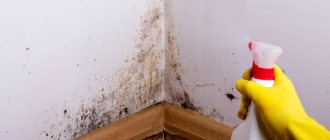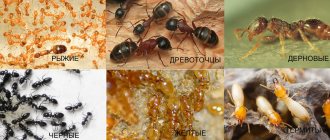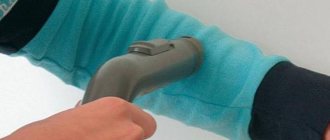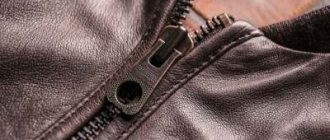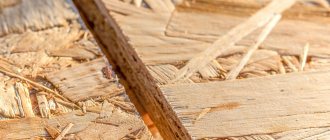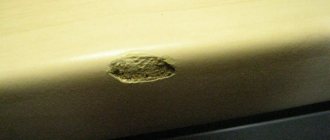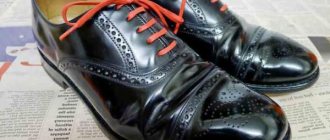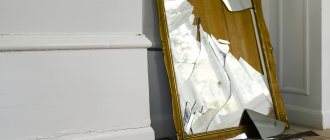Linen lice (also known as body lice and body lice) are a fairly common human parasite that can only feed on human blood. In its absence, linen lice die within a week.
These parasites can live in linen (bedding and underwear), items of clothing, mattresses, blankets, as well as upholstered furniture, for example, a sofa; the main thing for them is to be as close as possible to the source of food, that is, to the human body.
What to do in such a situation? To get started, we recommend reading this article. This article describes in detail methods of controlling parasites. We also recommend that you consult a specialist. Read the article >>>
What body lice look like can be clearly seen in the photo. They are distinguished from bed mites and from lice that live on the head by their larger size, reaching up to 5 mm in an adult; at the same time, they are smaller than bedbugs. In addition, bedbugs nest mainly in sleeping places (beds, sofas, carpets on the wall next to them).
Linen and head louse
The parasite lives only a month, but during this time the female manages to lay more than 300 eggs. They are attached to the fibers of clothing with a special adhesive substance in order to be as close as possible to the source of nutrition and heat, that is, to our body.
By the way, this is why linen lice are not localized on smooth, slippery silk, but prefer cotton and linen; but in woolen things they also usually do not start, since they are not worn on a naked body.
Body lice bites differ from bedbug bites in that they are not arranged in chains characteristic of bedbugs. If bites are found on the body, they must be treated with an antiseptic, and to prevent allergies, take some kind of antihistamine.
This is what bites look like
You can become infected with linen lice anywhere: in a hotel, in a camp, in the army, and even in an ordinary city crowd or in transport.
Action plan
We will talk about preventive measures below, but for now here is an algorithm of actions if you find body lice in your things and their bites on your body.
It is quite possible to get rid of insects at home, but your actions should be comprehensive and almost instantaneous, and not stretch out over several weeks.
The action plan is to treat all objects where linen lice may be located. The first such object is the body, yours and that of all household members. This is perhaps the easiest stage, since everything is limited to the shower. Immediately after this, you need to start chemical disinfestation of things and your home.
For legal entities
| Object area (m2) | One-time processing, price (in ₽) for 1 service | 4 services per year, cost (RUB per m²) for 1 approach | 12 treatments per year, price (RUB per m²) for 1 service |
| up to 100 | 3400 | 2700 | 2300 |
| from 100 to 200 | 26 | 22 | 17 |
| from 200 to 300 | 21 | 18 | 14 |
| from 300 to 400 | 19 | 16 | 12 |
| from 400 to 500 | 17 | 13 | 10 |
| from 500 to 1000 | 20 | 19 | 18 |
| from 1000 to 1500 | 19 | 17 | 16 |
| from 1500 to 2000 | 17 | 15 | 13 |
| from 2000 to 3000 | 15 | 13 | 11 |
| from 3000 to 4000 | 13 | 11 | 9 |
| from 4000 to 4500 | 11 | 9 | 7 |
| from 4500 to 6000 | 9 | 7 | 5 |
| from 6000 to 7000 | 7 | 6 | 4 |
| from 7000 to 8500 | 6 | 5 | 3 |
| from 8500 to 10000 | 5 | 4 | 2 |
| from 10000 | negotiable | negotiable | negotiable |
Body treatment
Typically, the localization of lice is on things, but both adult parasites and their eggs are also found on the human body. Therefore, the first thing we do is go to the pharmacy for special shampoos that can completely destroy the entire population. The following products are used: Medifox, NOK, Veda-2, Bubil, Lauri.
Medifox
You can also hear good reviews about tar, dust or ordinary laundry soap: the alkali they contain effectively helps get rid of insects. They can even be used by pregnant women and small children.
You need to wash in the shower, under the hottest water you can stand.
Appearance of body lice
Despite the fact that linen varieties of insects are adapted for the most part to live in things, nevertheless, they look similar to head lice. We can say that this is an evolutionary form of lice, when lice have adapted to live. The paws of such parasites are not adapted to hold on to the hair or head of their victim. The body of an adult reaches 3 or 4 mm. The abdomen is slightly elongated and has no wings. The texture of the insect is gray-yellow, whitish-watery. When a louse has eaten blood, a dark spot or formation can be seen inside its body.
Usually these creatures like to settle in the seams of clothes, especially woolen, knitted, terry, but never in silk or satin fabric. They can also live in pockets, under collars, in belts, hats and all sorts of fabric folds. It is in clothing that a favorable microclimate is created for these bloodsuckers so that they can develop in it and feed on the blood of people, continuing to bite them, as they do in the hair. They do not jump, but only crawl from place to place. Eggs (nits) are laid in clothes in hard-to-reach places (on the seams, inside pockets, under the lining).
Cleaning clothes
How to quickly get rid of parasites in clothes? Previously, washing in kerosene was used for this, but it is very difficult to get rid of its smell, so it is better to use more modern methods.
As already mentioned, if lice do not receive another portion of human blood within a week, they will die of starvation.
Therefore, if you have a suspicion that you have “picked up” a couple of such parasites somewhere, immediately wash your underwear and clothes in powder, hang them outside to dry for a few days (preferably in the sun), and after a few more days wash them again , iron on both sides with a hot iron, and then you can use them without fear.
In case of a “massive attack” of lice, it will be necessary to treat all things where they can live, including underwear and bed linen, towels, etc.
The optimal method is boiling for 15-20 minutes, preferably with the addition of karbofos or some insecticidal preparation based on permethrin (Medifox, NOC, Pedilin).
You can also simply treat things with such anti-pediculosis agents before regular washing.
However, many fabrics cannot be boiled; then items made from them can be kept in the freezer for 3-5 days, wrapped in a bag, or, if the weather outside is very cold, simply placed on the balcony.
Treating clothing, underwear and bed linen with such agents as pyrethrum, dust (DDT) or dichlorvos is also effective, after which they should be placed in an airtight bag for a couple of hours. But in this way you can only get rid of adult individuals, and to destroy nits you should iron things with an iron using the steam function.
In some cases, clothes should be treated with dichlorvos
To prevent the risk of a new infection, it is recommended to soak washed items in a 1% DDT emulsion, and then, without rinsing, dry them, iron them with a hot iron on both sides and then wash them again to get rid of the presence of DDT.
And finally, another effective way is to dry clean items that cannot be washed.
Effective means to combat linen lice
And now directly about the products that should be used when processing laundry:
A-par
This is perhaps the most effective drug. Its developers claim that it can get rid of not only lice, but also nits. Sold in aerosol form. It consists of two active components - Piperonibutoxide and Esdepalletrin. Before using the drug, things should be washed in the manner indicated above, after which the drug is sprayed over the entire surface of the clothing.
Akromed
The main active substance of this drug is Permethrin. It also contains kerosene, but there is no need to worry about the appearance of a characteristic odor. The drug is sold in the form of an emulsion, four liters of which is enough to treat 1 kilogram of things.
Forsyth
It is also a very effective drug, the main active ingredients of which are Permethrin and Fenthion. Sold in the form of an emulsion that requires preliminary preparation. 20 ml of the drug is diluted in a liter of water. To process a kilogram of things you will need 4 liters of ready-made solution. The treatment procedure requires repeating after a week.
Avicin
Active substance – Permethrin. To prepare the solution, take 1 part emulsion and 100 parts water. Soaking time for contaminated items is 25 minutes.
Celandine
The active substance of this drug is the same Permethrin. The drug is sold in the form of an emulsion, ready for use.
Apartment disinfection
To get rid of linen lice in an apartment, you need to completely disinfect it. To treat all existing surfaces, including floors, walls and cabinet furniture, a 2% DDT emulsion is used, after which after a couple of hours all surfaces should be washed with soap and water, since DDT, even in low dosages, has toxic properties.
Dust (DDT)
It is advisable to treat sleeping places, mattresses, and upholstered furniture properly, without missing a single area, with a household steam generator, but for carpets, blankets, rugs this will not be enough - they will have to be dry-cleaned.
Signs of appearance
Unfortunately, most people do not know how to recognize the appearance of lice in clothes at the initial stage. Their bites are often confused with the bites of other insects, such as mosquitoes. Only when multiple marks appear on the body do parasites become suspected.
Characteristic signs of a lice attack:
- bites. These insects do not have a proboscis, so they bury their heads deep under the skin. Because of this, the affected area is quite large. The bites are located chaotically; they do not have the “paths” characteristic of bedbugs.
- Severe itching. The affected areas have to be constantly combed, which can lead to the appearance of pustules, boils, and ulcers.
- Restless sleep. During night lice attacks, a person sleeps restlessly, itches, and tosses and turns, which leads to chronic fatigue.
- Presence of insects on the bed. They can be detected by examining linen, pillows, and blankets.
The presence of at least one of the symptoms listed is a reason to be wary and carry out a systematic inspection of your home.
Folk remedies at home
Is it possible to get rid of insects exclusively using folk remedies? Considering the effectiveness of modern insecticidal preparations, it is unlikely that anyone will rely only on the recipes of our great-grandmothers, however, folk remedies can be of good help in the future, when all of the above measures have been taken, and if several specimens still manage to survive, then their folk remedies they will finally finish it off.
So, what remedies against linen lice does the collection of popular advice offer? For example, add tansy decoction to water for rinsing clothes, and turpentine to water for washing floors.
In general, it should be admitted that lice have good taste - they love good perfumes, but they cannot stand the smells emitted by spurge, tansy and ferns growing in the apartment, so it is worth placing bunches of these herbs in cotton bags in cabinets and drawers.
Lavender oil will serve as an excellent protector: it can be applied directly to the body or to the seams of clothing - parasites also cannot stand this aroma, as well as tea tree oil.
Ancient recipes also recommend bathing in beetroot and wormwood broth; Many sources also mention parsley and mint juice, but where can you get so much juice? Cranberry juice is effective against body lice nits, the acidic environment of which helps to destroy the egg shell. But nits are usually localized on clothes, and then how can you remove stains from cranberry juice?
As you can see, not all ancient recipes work in our time.
What are bites? What they look like
The symptoms of linen lice lesions differ only slightly from the bites of other blood-sucking lice, but some features are still present. Basically, the specificity of their bites is expressed in the sensations of the one they bite. A linen louse can bite any part of the body that comes into contact with clothing - it could be arms, legs, back, etc. Other varieties of these parasites are not capable of this.
Symptoms and appearance of the bite
A person begins to suspect the presence of insects after lesions resembling insect bites appear on the body. It is very important to immediately determine which insect caused these lesions. After this, a decision should be made regarding measures to remove parasites. It is necessary to be able to distinguish the symptoms of lesions caused by lice in order to accurately determine the fact of their presence.
The bites of linen parasites are not much different from the bites of other insects - they are a red swelling that constantly itches and is located at some distance from other affected areas of the skin. Each swelling is crowned with a black dot - this is, in fact, a wound left by an insect when it punctures the skin. Through this hole the louse sucked blood.
A person will not immediately feel the bite, as the insect introduces a special enzyme for pain relief. At first, the bite is felt as a slight tingling sensation; it begins to itch only after a while, when the louse has already crawled to a safe distance.
The localization of bite sites is in the folds of clothing - armpits, lower back, etc. But this does not mean that these parasites do not bite other parts of the body; bite sites can be found anywhere. It must be said that the bites are very painful and very itchy. At the same time, the desire to scratch seems natural, but you need to control yourself in order to avoid the appearance of characteristic scratches on the body.
And now about the symptoms of linen lice in more detail:
- There is a red rash all over the body. This also applies to those areas where no bites were found. The whole body itches and hurts after scratching.
- Since the desire to scratch with head lice is inevitable, scars will eventually appear on the body; they can be deep.
- Pigment spots may form at the affected sites, indicating the presence of an allergic reaction in the infected person.
- In advanced cases, ulcers may well form on the body, which will certainly develop into pyoderma if a course of treatment is not carried out.
- Very advanced cases (happens to homeless people and other non-social elements) are characterized by thickening of the skin and its excessive pigmentation.
Usually people get rid of parasites at their first signs, but when proper measures are not taken for years, pediculosis goes into a neglected state, and this already threatens with serious consequences.
Characteristic signs of body lice bites
Of course, body lice bites are very similar to the bites of any other blood-sucking insect, but they still have their own characteristic signs:
- If there is a whole path on the body consisting of bite sites, then this is a clear sign of the presence of bedbugs. These insects try to make as many punctures as possible. There is no sequence in the bites of linen lice; they bite only in one place.
- Lice bites differ from flea bites in that they are much less painful. The fact is that nature did not take care of the secrecy of fleas, because they are very difficult to catch, but lice inject an anesthetic substance, since they are clumsy, and it is much more difficult for them to hide from persecution. In addition, flea bites, like bedbugs, are also located in the form of paths.
- Wounds caused by lice differ from tick bites by being slightly painful. After a tick, significant swelling remains on the body. In addition, the tick, having attached itself to the human body, remains in one place for a very long time, while the time the lice eat does not exceed several minutes.
- Lice bites can be confused with wounds left by mosquitoes, but mosquito bites do not have a black dot in the middle. And mosquitoes don’t bite under clothes, which, of course, cannot be said about linen lice.
- If the body is very itchy, but there are no signs of punctures, then the cause is not lice, but most likely scabies mites.
What dangers do parasite bites pose?
We have already talked about the possibility of pyoderma, but this is not the only danger that lice bites can cause. Lice may well be carriers of fever and even typhoid. In ancient times, these diseases were a real disaster for all peoples, but today they remain only in undeveloped countries.
In addition, lice may well be carriers of rickettsia - these are very dangerous bacteria that can cause several diseases similar to each other. And in the tropics, lice carry many more diseases that are unknown in temperate countries. Therefore, there are a lot of diseases that can be caused by lice. Be sure to consult a doctor if you experience nausea, fever, or increased temperature while having lice; these may well be symptoms of diseases caused by lice bites.
Where can you “catch” the infection?
- Linen lice can change hosts during close contact between people.
- There is a high probability of infection in crowded places.
- If people share the same items of clothing, this can also cause infection.
- In places where used clothing is sold, the presence of parasites is also possible.
- Lice can stay in water for up to 2 days, so they can be “picked up” in public bathing areas, for example, in swimming pools.
Prevention
Preventing infection is not too difficult, but it is not always possible. The main thing is to avoid contact with homeless people, antisocial individuals and simply sloppy and dirty dressed people. However, during rush hour on public transport or in a crowd of shops, this is hardly possible, so if such a person is near you, try to move as far away from him as possible.
You can also become infected in a hotel or on a train, especially if you used bedding. If you find yourself in an unsanitary room, try not to sit down, touch anything, and stay away from sleeping areas and other furniture.
In all these cases, it is recommended to immediately wash thoroughly with laundry soap under a very hot shower, wash your underwear and clothes (you can even use regular powder) and not wear them afterwards for at least a week. This is exactly the period during which starved linen lice will die, because they, unlike bedbugs, which can go into suspended animation for at least a year, cannot live without our blood.
Methods of infection
Where do linen lice come from? These parasites are transmitted between people in several ways:
- during physical contact, even if it is short-term;
- in crowded places where, one way or another, close contact occurs - public transport, crowds, kindergarten;
- when clothes are used by more than one person;
- when storing items of clothing together.
To avoid infestation with linen lice, it is better to avoid places where unclassed citizens are present, store personal belongings neatly and separately from everyone else if you are on vacation, and remain vigilant while on public transport.
It is possible to defeat parasites!
Antiparasitic Complex® - Reliable and safe removal of parasites in 21 days!
- The composition includes only natural ingredients;
- Does not cause side effects;
- Absolutely safe;
- Protects the liver, heart, lungs, stomach, skin from parasites;
- Removes waste products of parasites from the body.
- Effectively destroys most types of helminths in 21 days.
There is now a preferential program for free packaging. Read expert opinion.
Read further:
How to get rid of nits at home, traditional methods
How to effectively and permanently remove bed bugs from your apartment
Bedbug bite in a child and an adult: what it looks like and how you can get rid of it
How to get rid of roundworms at home using tablets and folk recipes
Treatment of worms in children at home: the best folk recipes for self-medication
How to get rid of lice and nits with vinegar at home: treatment methods
What harm can they cause?
The disease caused by lice is called pediculosis. Its symptoms are varied and depend on the number of bites and the characteristics of the body.
Redness and itching
The first and obvious symptoms are redness and swelling of the bite site. Papules are very itchy, scratching does not bring relief, the spots become brighter and more inflamed.
See also
How to eliminate squeaking wooden floors with your own hands without disassembling them
Allergy
During bites, lice saliva enters the wounds and provokes allergic reactions. Allergies are manifested by increased itching, the appearance of skin rashes, nausea, and digestive disorders. In severe cases, the temperature may rise.
Information: body lice carry typhus, relapsing fever, and Volyn fever, which makes infection with pediculosis especially dangerous.
Ulcers
Ulcers appear at the site of scratching, the skin often becomes rough, takes on an unnatural appearance, and thickens.
Pyoderma
When scratching, infection with pyogenic bacteria often occurs and pyoderma develops.
General malaise
General malaise is the result of numerous bites, allergic reactions, and insomnia.
Irritability
Constant itching causes nervous system disorders and poor sleep. Fatigue accumulates and irritability appears.
Infection through scratching
If pathogenic microorganisms enter through wounds, infectious infections occur, in particular furunculosis.
